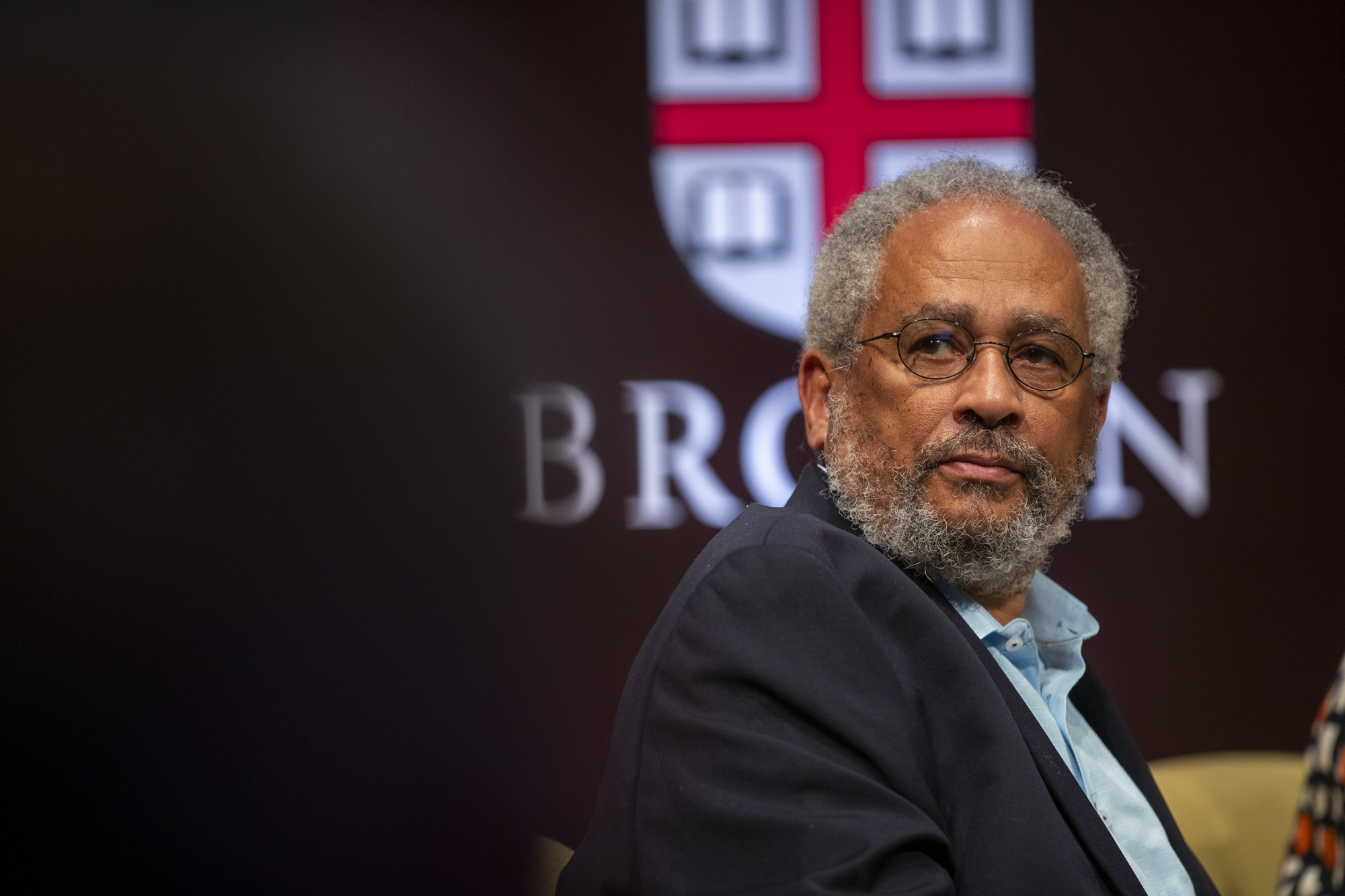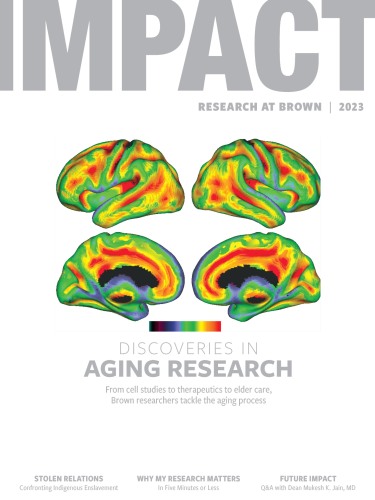Slavery and Justice Report, Revisited
Fifteen years after its initial publication, Brown’s watershed Slavery and Justice Report has been reinvigorated, and the Simmons Center is changing how the world learns about the legacies of slavery.
Fifteen years after its initial publication, Brown’s watershed Slavery and Justice Report has been reinvigorated, and the Simmons Center is changing how the world learns about the legacies of slavery.
HOW DOES AN ACADEMIC INSTITUTION tell the story of its ties to the transatlantic slave trade and inspire global conversations that grapple with the residual effects of slavery in the present day?
Brown University first responded to this challenge in 2003, digging deeply into its complicated past and sharing the findings in its watershed 2006 Report of the Brown University Steering Committee on Slavery and Justice. Commissioned by then-president Ruth J. Simmons, the report publicly confronted and documented the University’s complex history with the transatlantic slave trade. It prompted Brown to address issues of inequity in everything from its teaching and research to its admissions and hiring practices, and it sparked a national discussion on higher education’s entanglements with slavery, inspiring similar reckonings at more than 100 other colleges and universities.
“ As a center for research and public humanities, we have an objective to tell histories in ways which might transform the present. ”
One of the report’s core recommendations was the founding of a center for research, teaching, and public programs on slavery and other forms of injustice. The result was the 2012 launch of Brown’s Center for the Study of Slavery and Justice (CSSJ), recently renamed the Ruth J. Simmons Center for the Study of Slavery and Justice.
“As a center for research and public humanities, we have an objective to tell histories in ways which might transform the present,” said center director Anthony Bogues, professor of humanities and Africana studies.
In 2020 and 2021, Brown took up that challenge a second time. As millions watched in horror as police violence and the COVID-19 pandemic claimed a disproportionate percentage of Black lives—and as those realities shed light on the indelible connections between historical slavery, anti-Black racism, and systemic inequality—Brown responded with an expanded second edition of the groundbreaking Slavery and Justice Report.
The new edition offered an unflinching assessment of both how far Brown has come in implementing the report’s original recommendations and what remains to be accomplished. It also includes commentary from President Christina H. Paxson, President Emerita Simmons, and numerous University scholars and alumni.
“Based upon the current state of our country’s—and the world’s—confrontation of systemic racism, we know that the commitment to equity is a perpetual march—one that will perhaps never be complete,” Paxson wrote in the foreword. “Meanwhile, Black people continue to be harmed by persistent disparities in access to medical care, wealth, employment, housing, education, wages, and food security. It is through the lens of these complex issues, inextricably intertwined with the legacies of slavery, that we revisit the Slavery and Justice Report.”
The updated report is available as an immersive, interactive digital experience created by the Brown Library’s Digital Publications Initiative, as a digital teaching edition used in Brown’s First Readings program for incoming students, and in print.
As readers engage with the new text, the Simmons Center continues to carry out its mission, with hundreds of public programs offered to date. Currently, the center is engaged in an archival storytelling initiative, delving into historical, personal accounts of people enslaved as well as their ancestors, to unearth new insights about the realities of slavery. Students, scholars, historians, and contributors will have access to these oral narratives, which will be housed at Brown’s John Hay Library and exhibited in museums across the globe.
In support of the endeavor, the University received a $1.25 million grant from the Abrams Foundation to fund the project, titled Unfinished Conversations. The project is connected to the Global Curatorial Project, co-convened by the Simmons Center and the Smithsonian’s National Museum of African American History and Culture (NMAAHC).
Select narratives and materials collected by the Unfinished Conversations initiative will be incorporated into a major exhibition, tentatively named In Slavery’s Wake: Slavery, Freedom, and the Making of Our World, which is expected to open at the NMAAHC in Washington, DC, in December 2024 and will travel to Brussels, Cape Town, Dakar, Liverpool, and Rio de Janeiro.
Amanda Strauss, associate university librarian for special collections, said a central repository is being built to ensure that each individual and every partnering institution retains the intellectual property rights of the oral interviews.
“Although these oral histories will be preserved at Brown’s John Hay Library, which serves a global audience of scholars, the work to preserve these precious stories is being undertaken on behalf of the individuals and communities who are sharing them,” Strauss said. “Our primary goal is respectful and informed consent–driven stewardship. We will not replicate the systems that extracted labor and knowledge from the ancestors and descendants whose stories we will care for.”

Bogues says that while all histories are complex, the history of racial slavery and colonialism is one that continues to reverberate today in the shaping of societies across the globe.
“Part of what we try to do at the center is advance historical narratives that can make a difference,” Bogues said. “People learn their histories not just from books but also within museums, films, and other modalities. We operate on the legs of scholarship and public humanities so we can confront this particular aspect of the American experience.”
